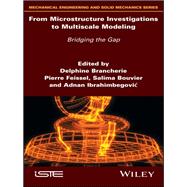Mechanical behaviors of materials are highly influenced by their architectures and/or microstructures. Hence, progress in material science involves understanding and modeling the link between the microstructure and the material behavior at different scales. This book gathers contributions from eminent researchers in the field of computational and experimental material modeling. It presents advanced experimental techniques to acquire the microstructure features together with dedicated numerical and analytical tools to take into account the randomness of the micro-structure.








